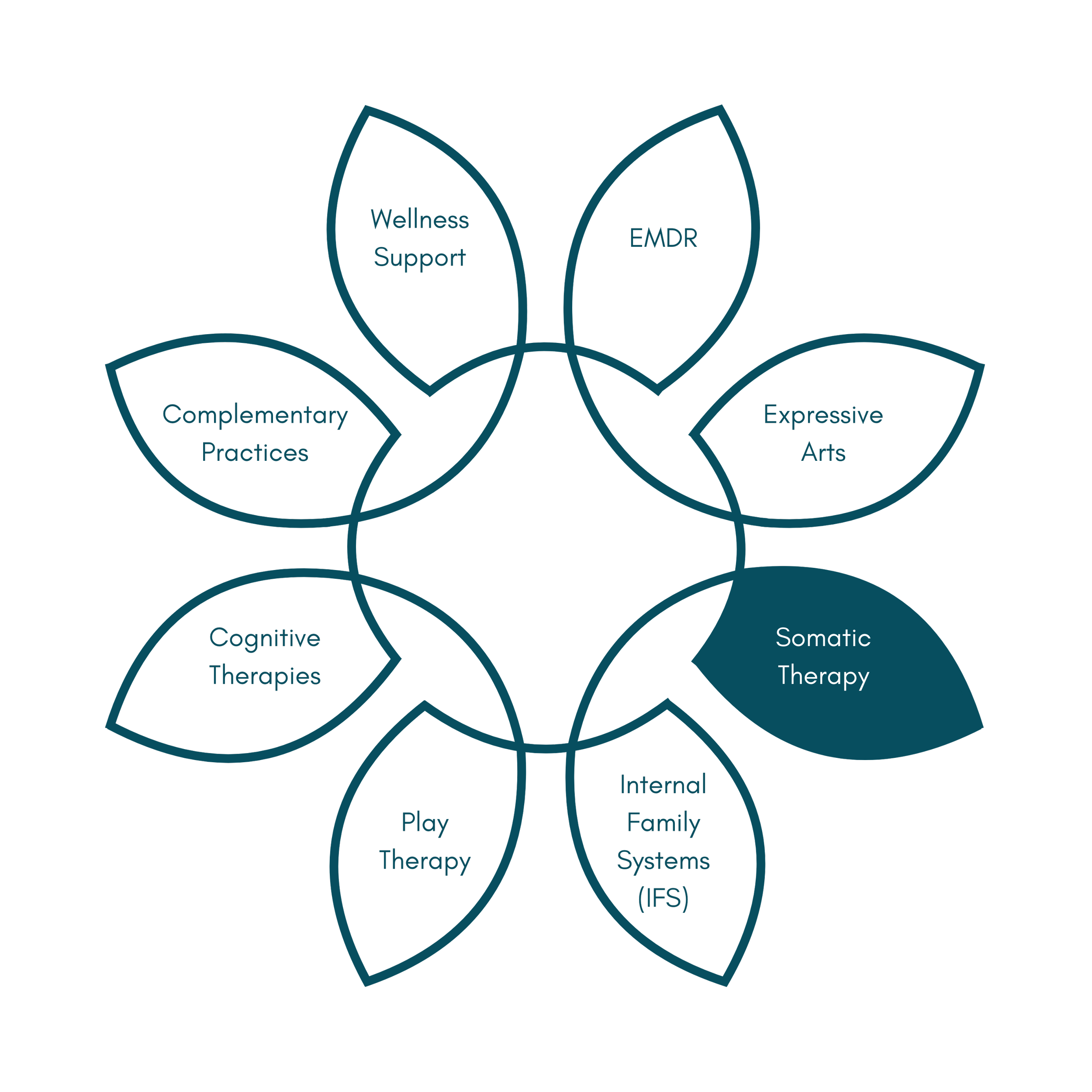
Somatic Therapy
“In order to change, people need to become aware of their sensations and the way that their bodies interact with the world around them. Physical self-awareness is the first step in releasing the tyranny of the past.”
― Bessel A. van der Kolk, The Body Keeps the Score
What does somatic mean?
The word “somatic” simply refers to anything relating to the physical body.
In somatic therapy, we explore the connection between the mind and body to understand and shift the way the body responds to emotions and experiences, especially those that are distressing.
This approach is different from other types of therapy where “talking” does most of the work, such as in Cognitive Therapies; Instead, the focus is on the experiential understanding of the self.
In essence, what and how the body actually “feels.” It’s all about learning to listen to your body, and using that awareness to feel better emotionally and physically.
How does Somatic Therapy work?
Somatic therapy is based on the idea that our thoughts, feelings and emotions not only exist in the mind, but are stored within the body as well.
Just as joyful or exciting experiences can elicit full-body sensations, (”butterflies”), trauma, stress, or emotional pain can carry strong physical associations; even long after the event has passed.
Connecting with these physical sensations offers an alternative entry point for a deeper understanding of ourselves— especially for those who have “stalled out” in talk therapy, or struggle to describe their experiences.
Specific body-based techniques used during somatic therapy aim to regulate the nervous system to ground the body, focus awareness, find safety to release stored tension, and provide self-compassion to access calm/comfort.
Techniques used during Somatic Therapy:
Body Awareness & Mindfulness
Guided body awareness, also referred to as “dropping down”, is to shift your attention from thoughts and mental analysis, to the body’s physical sensations. This act of slowing down and tuning in to subtle impulses, cues, and information, allows one to listen intuitively and with curiosity to what the body has to say, engage with that message, and identify what is needed.
Grounding Exercises
Techniques like deep breathing, focusing on specific sensory stimulation(s), or mindfully observing the environment to “orient” oneself helps to cultivate feelings of safety and stability— bringing a nervous system that is overwhelmed or over-activated back to center.
Titration & Pendulation
Gradually introducing small amounts of distressing sensations and shifting the focus to safety, to allow the nervous system to process trauma without becoming overwhelmed. This ebb and flow of emotions is like “dipping your toe in” to test the water— to gently expand one’s ability to handle discomfort, and pausing or engaging in supportive strategies when that threshold is met.
Movement
Intentional physical movement, such as mirroring, dance, yoga, postural stances or gestures, can serve various purposes depending on the messages the body is sending. Movement may be expressed as a response, “activating” or enhancing a concept being explored. It might invite a way to release trapped emotion, or offer a reparative or nurturing sensation afterwards.
Who is best suited for Somatic Therapy?
Somatic Therapy can benefit anyone seeking a deeper connection with themselves, but is particularly well suited to those experiencing the effects of trauma, stress, and/or chronic pain― especially when other treatment types have stopped working.
By tuning into the body’s signals, Somatic Therapy allows one to heal and grow by strengthening self-awareness, emotional resilience, and releasing stored tension in a safe and supportive way.
In addition to individuals who struggle with trauma or stress-related challenges, the positive effects of Somatic Therapy may also extend to those who experience:
Chronic Illness or Physical Tension
Anxiety, Overwhelm and Burnout
Depression
Grief & Loss
Mood Disorders & Emotional Dysregulation
Dissassociative Disorders
Self Esteem and Identity Challenges
Desire to deepen their mind-body connection
Explore All Treatment Approaches








